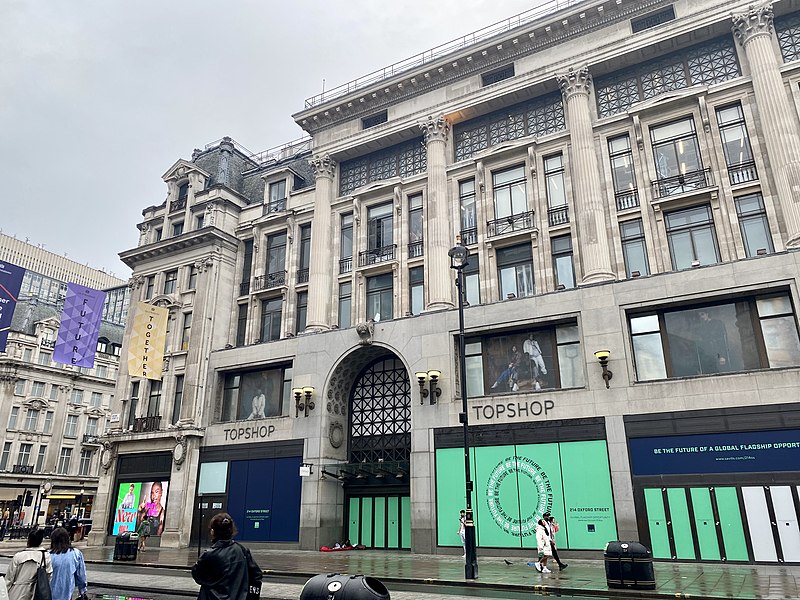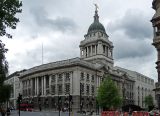
Oxford Street, once the hub of Britain's high-end stores, is now a shopping destination that is being increasingly abandoned by the big name brands that earned it such esteem. MailOnline has
published photos revealing the decline of Oxford Street, which is now home to empty shells of ornate stonework stores that used to house some of the UK's most famous brands.
The coronavirus pandemic has changed the look of the British high street forever, as iconic brands were plunged into administration and forced to close their doors. Tom Ironside, Director of Business & Regulation at the British Retail Consortium, told MailOnline that the number of empty storefronts remains around 10 per cent higher than pre-pandemic levels.
As big names such as Topshop, Miss Selfridge, Dorothy Perkins, Debenhams, Oasis and Warehouse disappeared, city centres across the country were left with empty windows and people instead searching for their favourite labels online. Britain's high streets were already in a state of decline as shoppers increasingly turned to online fast fashion.
Despite this, shoppers are starting to return, with footfall up 10% year-on-year last week and up 38% since the beginning of the year, according to New West End Company, which represents 600 retailers and hoteliers in the area. However, the pandemic has been blamed for the eventual closures of popular shops.
One of the most famous to go has been Topshop, which was once the undisputed queen of the British high street. Just a decade ago, Topshop's trendy clothes, sell-out designer collaborations and 100,000 sq ft Oxford Street flagship store attracted everyone from tourists and teenagers to It Girls and fashion editors.
However, aggressive competition from the likes of PrettyLittleThing, Boohoo and Missguided, which have lured Gen Z shoppers with their ultra fast fashion and even faster delivery times, contributed to Topshop's demise. The burden of Topshop's 510 branches, including some 300 in the UK, was felt more keenly than ever as the Covid-19 pandemic led to a dramatic drop in footfall and a record number of shops closing during the first half of 2020.
Topshop's doors closed forever after rescue plans to save the Arcadia group, owned by billionaire Sir Philip Green, failed and it entered administration in November 2021, making up to 2500 staff members redundant. ASOS bought Topshop, alongside Topman and Miss Selfridge, in April 2021 as part of a £330 million deal to save the brands. The deal did not include the physical shops, but customers can still buy Topshop, Topman and Miss Selfridge clothes online on ASOS' website.
The decline of Oxford Street reflects the wider challenges facing brick-and-mortar retailers. The pandemic has accelerated the shift towards online shopping, which has put pressure on high street stores to innovate and adapt in order to survive. The rise of fast fashion has also led to changing consumer preferences, with shoppers increasingly favouring low-cost, trend-led clothing that can be worn a few times before being discarded.
As the high street continues to evolve, retailers must be willing to experiment with new strategies and technologies in order to remain relevant. Online channels provide an opportunity to reach a wider audience, while innovative in-store experiences can attract customers back to physical stores. Ultimately, the survival of the high street will depend on retailers' ability to adapt and respond to the changing needs of their customers. Photo by No Swan So Fine, Wikimedia commons.



































